You might think you’re committed because you share a Netflix account or survived assembling IKEA furniture together, but some birds are taking devotion to a whole new level. When it comes to standing by their partners, these feathered friends are making us humans look like amateurs. From lifelong bonds to selfless sacrifices, these avian acts of commitment are not just impressive; they’re downright inspiring. Whether you’re contemplating the nature of love or just curious about the animal kingdom, here are 15 ways birds show commitment that could teach all of us a thing or two.
1. Swans: Mating For Life
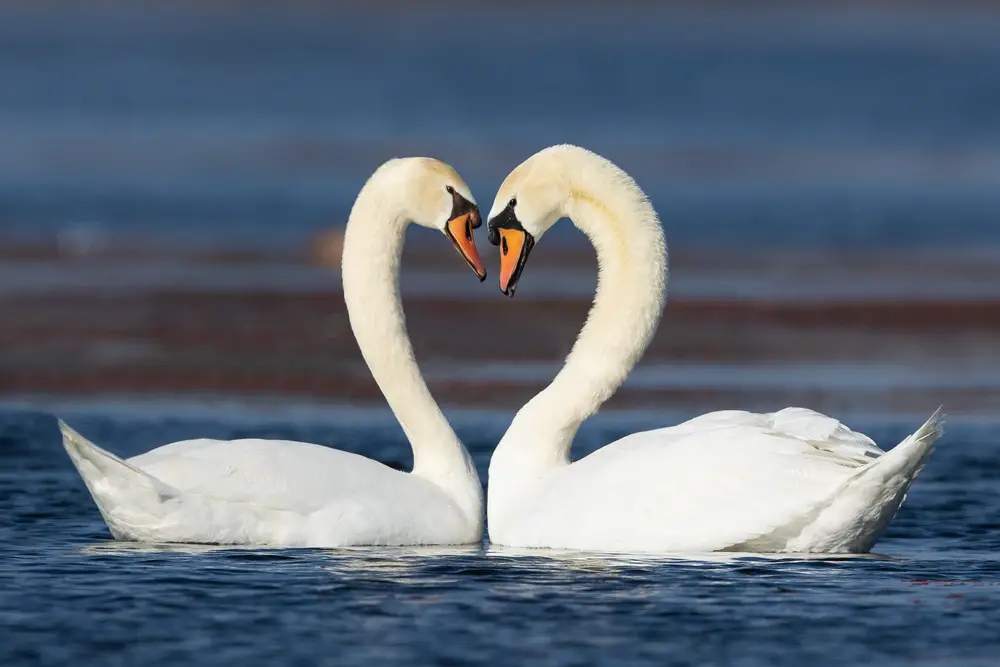
When you think of lifelong partners, swans probably come to mind. These elegant birds are famous for forming monogamous relationships that can last a lifetime. Swans not only mate for life but also engage in elaborate courtship rituals that strengthen their bond. According to Dr. Judith Rhymer, a biologist who studies avian behavior, these rituals include synchronized swimming and head-bobbing displays. Such lifelong dedication to a partner isn’t just rare in the bird world; it’s a testament to the deep connection swans share.
But it’s not just about romance; swans also share the responsibilities of life. They build nests together and take turns incubating their eggs, showing a division of labor that would make any modern couple proud. This teamwork doesn’t end once the chicks are born; both parents are involved in raising their young. Their commitment to each other and their family unit is truly something to admire. It’s no wonder swans have become a symbol of true love and fidelity.
2. Albatrosses: Long-Distance Love
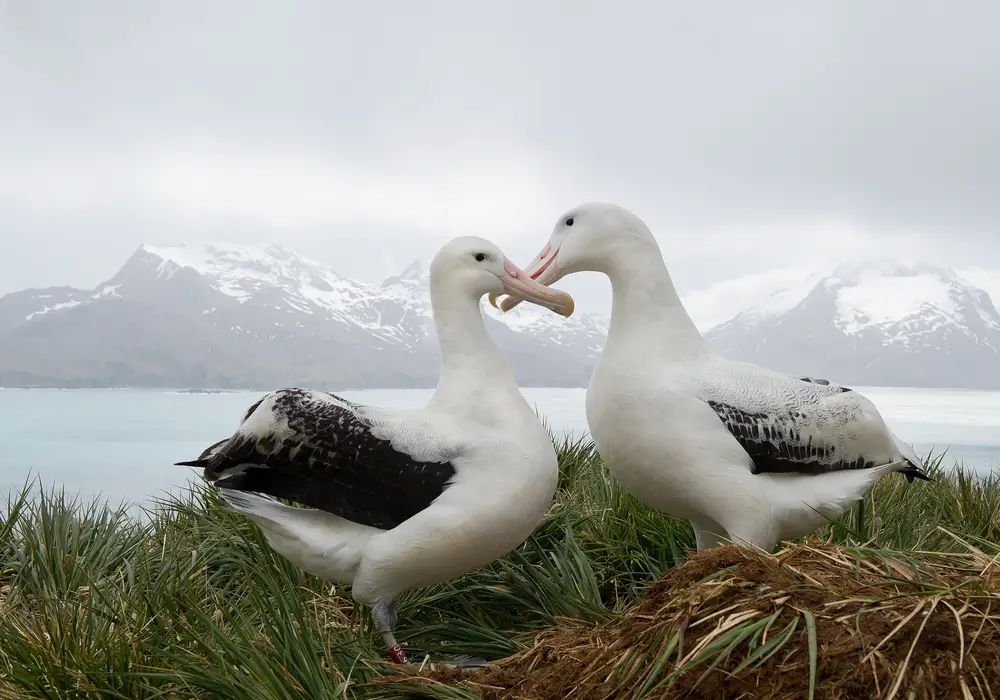
If you thought long-distance relationships were tough, wait until you hear about albatrosses. These birds are often separated from their partners for months on end due to their extensive migratory patterns. Despite the distance, albatrosses maintain their bonds through an incredible display of loyalty. When they reunite, they greet each other with an elaborate dance that reaffirms their partnership. This reunion ritual is essential in maintaining their relationship, showing that absence really can make the heart grow fonder.
Albatrosses aren’t just committed partners; they are also dedicated parents. Both the male and female take turns incubating their single egg and later, feeding the chick. This shared responsibility ensures that their young have the best chance of survival. These birds demonstrate that distance doesn’t have to be a barrier to a strong and lasting relationship. Their ability to remain loyal over vast distances puts a fresh perspective on what it means to be committed.
3. Penguins: Sharing The Parenting
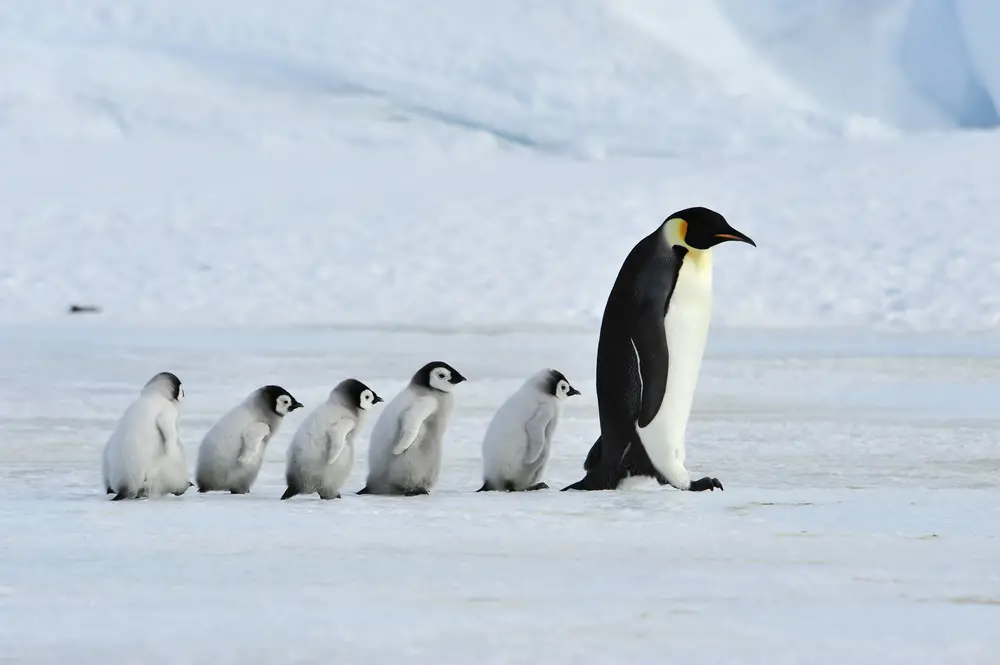
Penguins are often seen as the poster birds for shared parental responsibility. These devoted birds take turns keeping their eggs warm, ensuring that their offspring have the best start in life. According to Dr. Gerald Kooyman, a marine biologist specializing in penguin research, the male Emperor penguin will endure harsh Antarctic winters to keep the egg warm while the female goes to sea to feed. This selfless act of shared duty is not only a testament to their commitment but also crucial for the survival of their chicks.
Once the chicks hatch, both parents continue their collaborative effort by feeding and protecting them. This teamwork is crucial in such a harsh environment, where resources are scarce and the climate is unforgiving. Their commitment to co-parenting ensures that their young are well-fed and cared for. Penguins show us that true partnership is about supporting each other through thick and thin. Their dedication to family is truly inspiring and serves as a model of shared responsibility.
4. Bald Eagles: Building Together
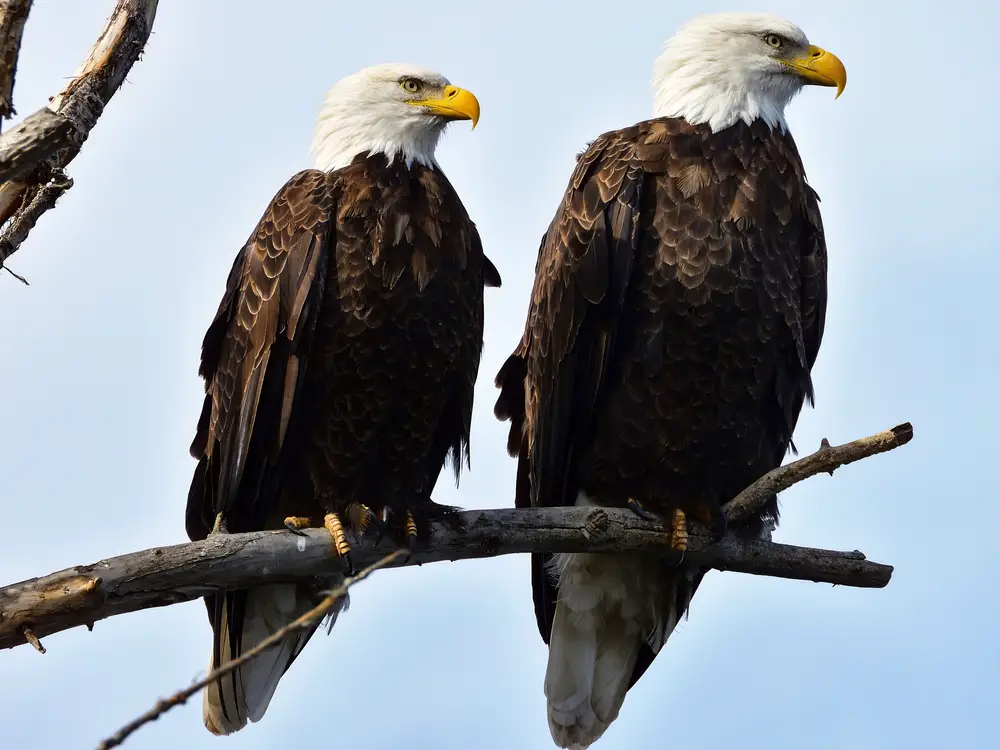
Bald eagles are known not just for their majestic appearances but also for their impressive commitment to their partners. These birds of prey mate for life and work together to build massive nests known as eyries. Constructed high up in trees or on cliffs, these nests are often reused and renovated each year, showing a level of investment akin to owning a home together. This cooperative effort in building and maintaining their nest solidifies their bond and ensures a safe environment for raising their young.
Once the nest is ready, both parents take part in incubating the eggs and feeding the eaglets. The shared responsibility doesn’t end there; they also work together to teach their young how to hunt and survive in the wild. This teamwork strengthens their relationship and ensures the survival of the next generation. Bald eagles demonstrate that building a life together requires cooperation, trust, and a shared vision for the future. Their partnership is a powerful example of enduring love and commitment.
5. Lovebirds: True To Their Name
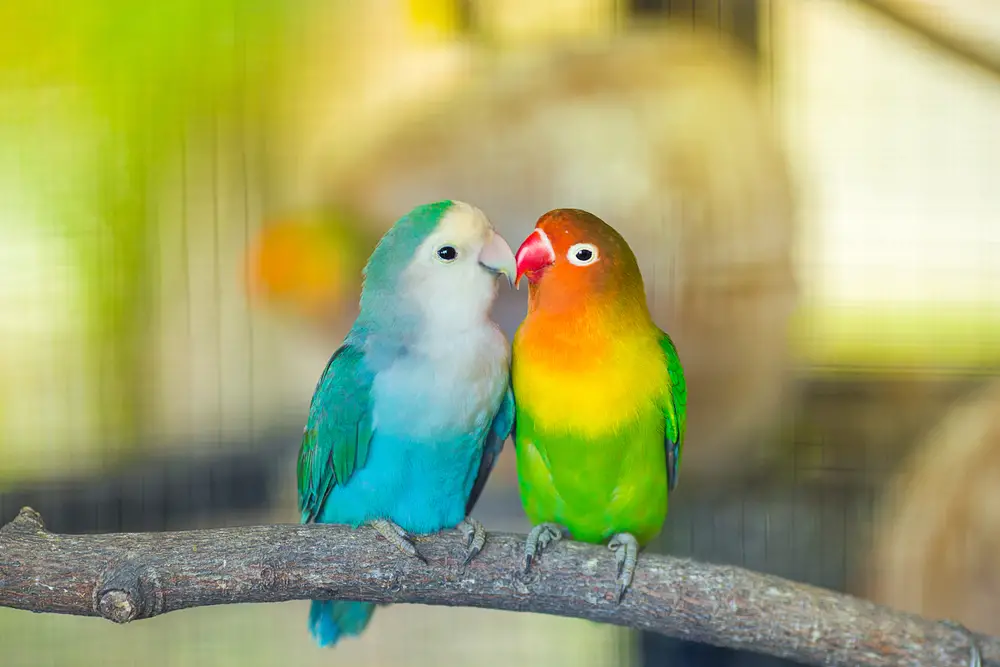
As their name suggests, lovebirds are known for their affectionate behavior towards their partners. These small parrots form strong monogamous bonds that last for many years. According to Dr. Irene Pepperberg, a renowned avian cognition expert, lovebirds spend a significant amount of time preening each other, which strengthens their bond and ensures good hygiene. Such intimate interactions are a daily reminder of their commitment to each other.
Lovebirds are also known for their cooperation in nesting and raising their young. Both partners take part in building the nest and share responsibilities in caring for their chicks. This partnership doesn’t just secure the well-being of their offspring; it also reinforces their relationship. The shared experience of raising a family brings the pair even closer together. With their strong bonds and collaborative spirit, lovebirds show us that commitment is about mutual support and care.
6. Macaroni Penguins: Gift Giving
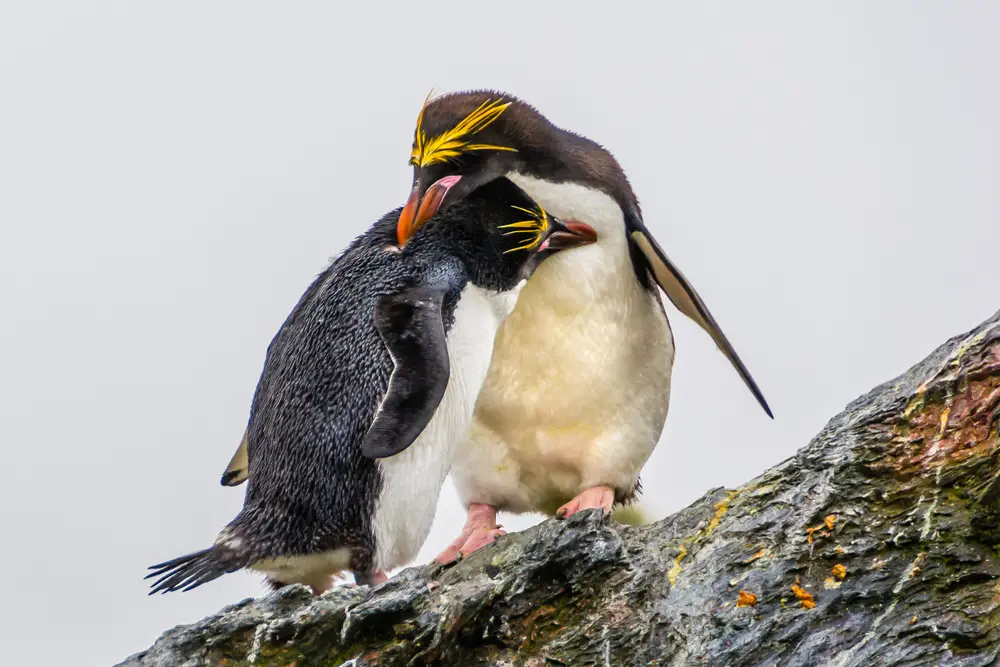
Macaroni penguins have a unique way of showing their commitment: through gift-giving. During the courtship period, males collect and present pebbles to their chosen females, a gesture meant to win their affection. This “pebble proposal” is not only a romantic gesture but also a practical one. The female uses these pebbles to build a sturdy nest, demonstrating that the male is serious about their partnership. Such thoughtful actions underline the importance of effort and intention in a relationship.
Once the female has accepted the pebble, the duo works together to create a safe environment for their future chicks. Both parents take active roles in incubating the eggs and feeding the hatchlings. The symbolic exchange of pebbles translates into a real commitment to building a family together. By investing in these gestures and shared responsibilities, macaroni penguins show that love is about more than just words. Their actions speak volumes about their dedication to each other and their offspring.
7. Red-Crowned Cranes: Dancing Duets
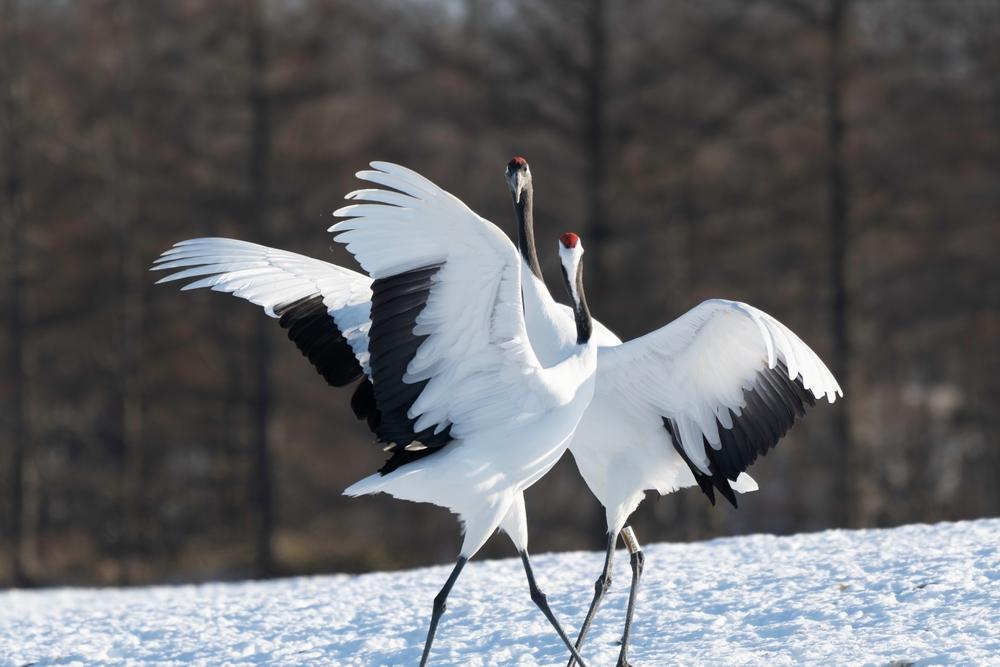
Red-crowned cranes are an iconic symbol of love and fidelity in many cultures, and for good reason. These majestic birds perform intricate courtship dances that reinforce their lifelong bonds. According to Dr. George Archibald, co-founder of the International Crane Foundation, these dances involve synchronized movements, bowing, and leaping, all designed to strengthen the pair’s connection. This mutual performance is not just a spectacle; it’s a vital component of their relationship.
The crane’s commitment extends beyond courtship. Once paired, these birds work together to build their nests and raise their young, sharing the responsibilities equally. The cohesion and coordination demonstrated in their dances carry over into their parenting, ensuring the success of their offspring. Red-crowned cranes remind us that maintaining a relationship requires ongoing effort and communication. Their harmonious partnership is an example of how love can be expressed through shared experiences and mutual support.
8. Cardinals: Singing Together
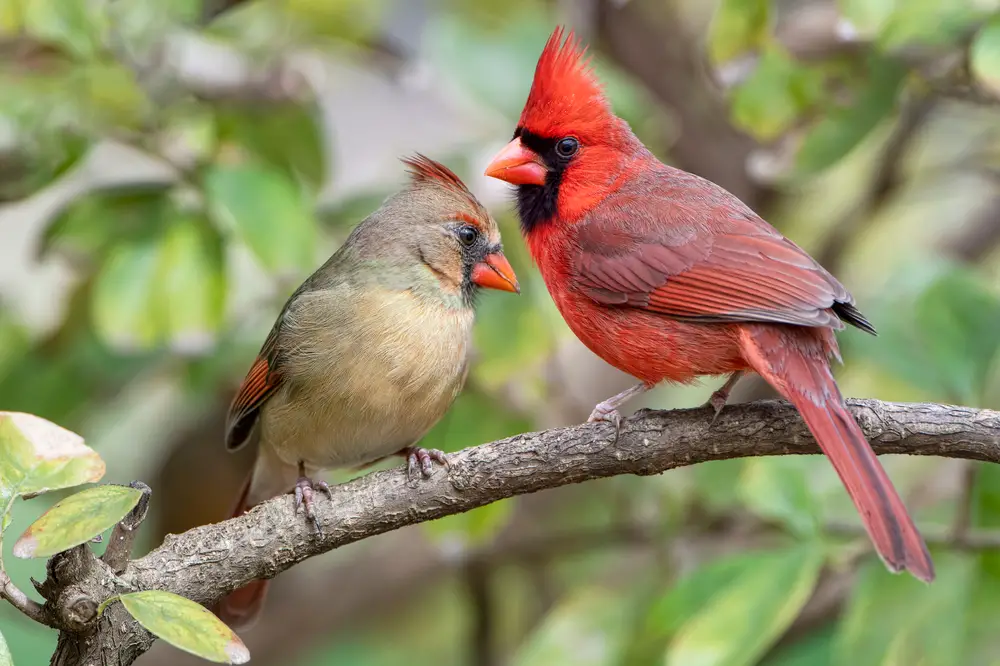
Cardinals are known for their vibrant red plumage and beautiful songs, but did you know they also sing duets with their partners? This musical collaboration is a way for cardinal pairs to communicate and strengthen their bond. Through their harmonious melodies, they establish and maintain their territory, demonstrating a unified front to potential intruders. This vocal teamwork is an integral part of their relationship, showcasing a unique way of expressing commitment.
The bond between cardinal pairs goes beyond their singing. They also collaborate in building nests and raising their young, sharing the duties of feeding and protecting their chicks. This partnership ensures that their offspring have the best possible start in life. Cardinals teach us that a successful relationship is about harmony and working together as a team. Their beautiful songs and collaborative spirit are a testament to the depth of their commitment.
9. Puffins: Home Renovators
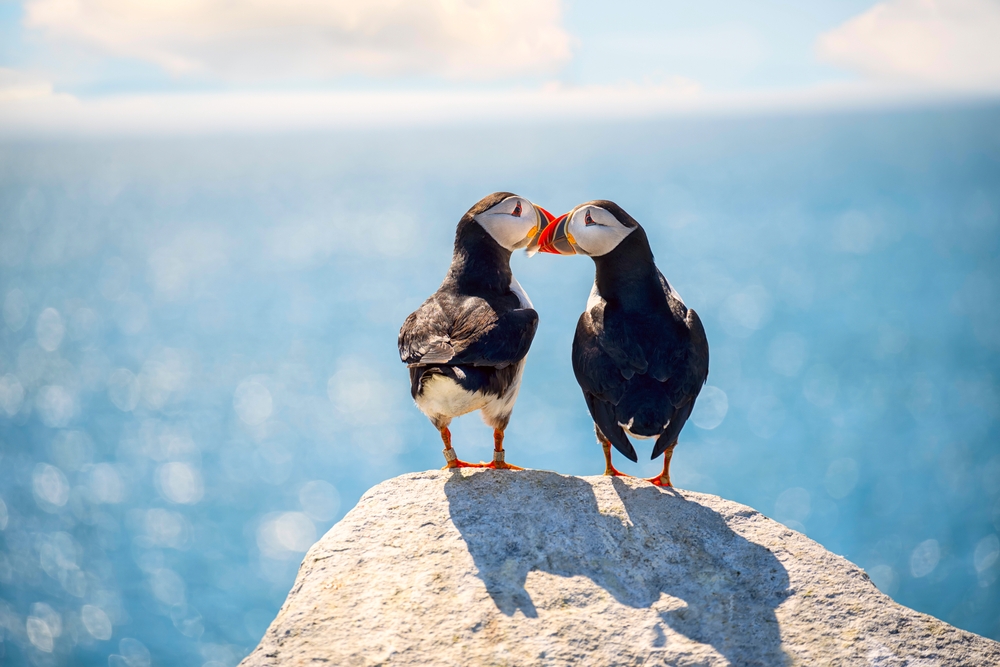
Puffins may look comical, but their commitment to their partners is no laughing matter. These seabirds are known for their lifelong bonds and their dedication to maintaining a comfortable home. Every breeding season, puffin pairs return to the same burrow, often improving it with fresh grass and feathers. This annual renovation is a joint effort that strengthens their bond and provides a safe haven for their young.
In addition to maintaining their home, both puffin parents are actively involved in raising their chicks. They take turns incubating the egg and bringing food to the nest, ensuring their offspring are well-cared for. This shared responsibility is crucial for the survival of their young in the harsh environments they call home. Puffins show us that commitment involves ongoing effort and cooperation, not just between partners but as a cohesive family unit. Their dedication to maintaining their home and family life is truly admirable.
10. Great Hornbills: Sealing The Deal
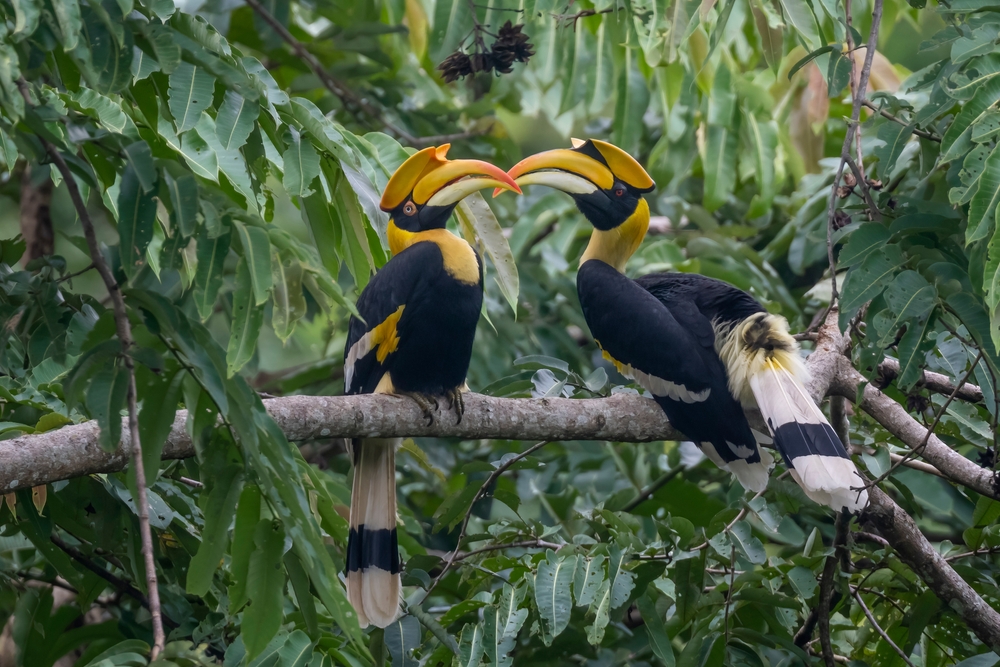
Great hornbills have a unique way of showing their commitment to their partners, which involves a remarkable act of trust. When it’s time to raise a family, the female seals herself inside a tree cavity using mud and droppings, leaving only a small slit for food to pass through. The male then takes on the role of provider, bringing food to his mate and later to their chicks through this narrow opening. This extraordinary arrangement requires immense trust from both partners and is a testament to their devotion.
During this time, the male’s dedication is crucial for the survival of his family. He tirelessly forages for food to ensure his mate and chicks are well-fed, demonstrating unwavering commitment. Once the chicks are old enough, the female breaks out of the cavity, and both parents work together to continue raising their young. The great hornbill’s approach to family life illustrates the importance of trust and partnership in a relationship. Their extraordinary commitment showcases how love can overcome even the most challenging circumstances.
11. Black Vultures: Enforcing Fidelity
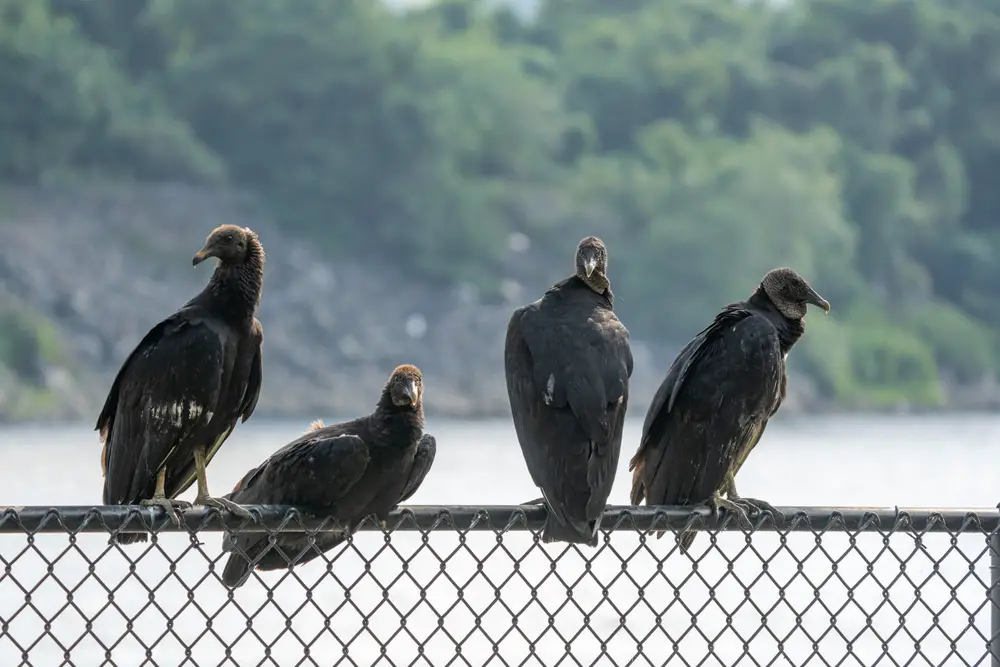
Black vultures are not just known for their scavenging habits but also their strict approach to fidelity. These birds are monogamous and maintain strong pair bonds, going as far as enforcing fidelity among their peers. If a vulture strays from its partner, it risks facing aggression from others in the flock. This social policing ensures that pair bonds remain intact, highlighting the importance they place on commitment.
Both partners are actively involved in building their nest and raising their young. They share duties in incubating the eggs and feeding their chicks, demonstrating their dedication to their family. This teamwork is vital for the survival of their young in an unpredictable environment. Black vultures remind us that commitment requires devotion and accountability. Their strict adherence to monogamy serves as a lesson in the importance of loyalty and partnership.
12. Barn Owls: Silent Partners
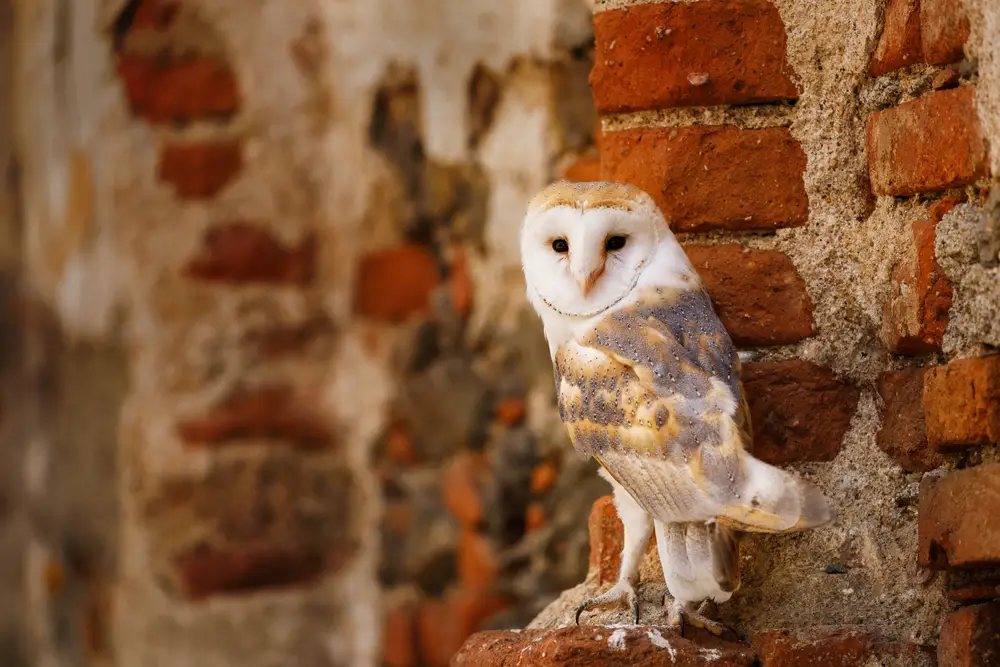
Barn owls might be known for their silent flight, but their commitment to their partners speaks volumes. These nocturnal birds are monogamous and form strong, lasting bonds with their mates. They communicate using a series of calls and duets that strengthen their relationship and coordinate their activities. This vocal communication is crucial for maintaining their partnership, especially during the breeding season.
Both barn owl parents take part in raising their young, with the male hunting for food and the female caring for the chicks. Their combined efforts ensure that their offspring are well-nourished and protected. This division of labor allows them to focus on their strengths, resulting in a successful and harmonious family life. Barn owls show us that true commitment involves communication and collaboration. Their silent yet strong partnership is a testament to the power of working together.
13. Gannets: Aerial Courtship
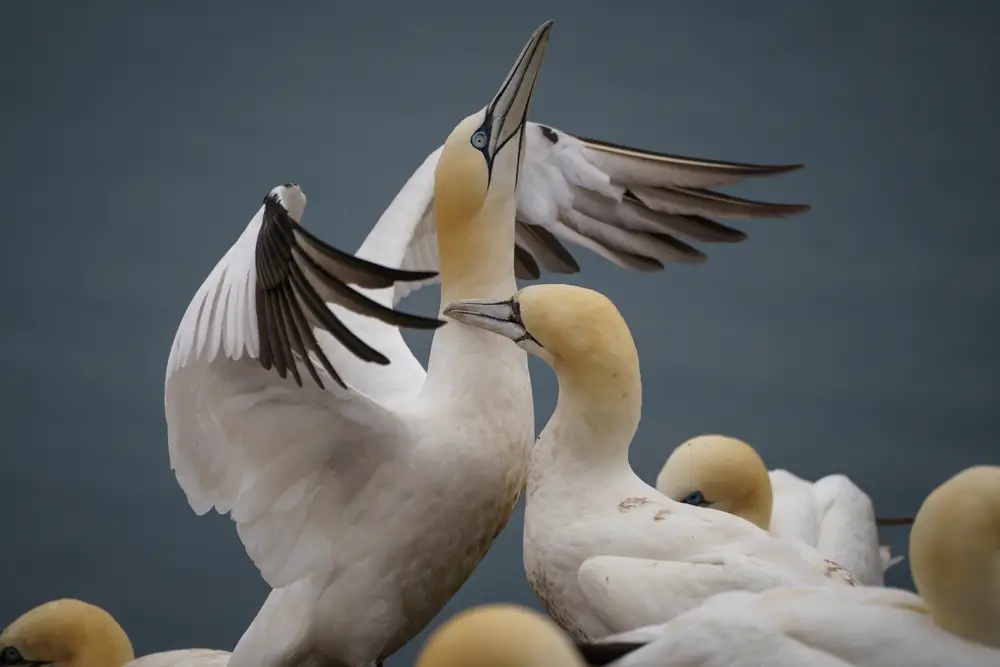
Gannets are known for their spectacular aerial courtship displays, which play a crucial role in forming and maintaining their lifelong bonds. These seabirds engage in synchronized flying and diving, showcasing their strength and agility to impress their partners. These breathtaking displays are not just about courtship; they serve to reinforce the pair’s bond each breeding season. The effort and skill required for these displays highlight the importance they place on their relationship.
Once bonded, gannet pairs work together to build their nests and care for their chicks. Both parents take turns incubating the eggs and feeding their young, ensuring their survival in a challenging marine environment. This shared responsibility is a testament to their commitment to each other and their family. Gannets demonstrate that love involves ongoing effort and dedication. Their spectacular courtship and collaborative parenting serve as a reminder that commitment is an active, shared journey.
14. Woodpeckers: Teamwork Drumming

Woodpeckers are not just talented drummers; they’re also committed partners. These birds use their drumming abilities to communicate with their mates, establishing and maintaining their territory together. This rhythmic communication plays a vital role in strengthening their bond and coordinating their activities. Woodpeckers’ teamwork in drumming showcases the harmony and unity in their relationship.
In addition to their drumming, woodpecker pairs work together to excavate cavities for nesting. Both partners take turns incubating the eggs and feeding their chicks, ensuring their young are well-cared for. This collaborative effort is crucial for the survival of their offspring in a competitive environment. Woodpeckers remind us that commitment involves communication and cooperation. Their teamwork and dedication to their family are a testament to the strength of their bond.
15. Ospreys: Fishing Partners
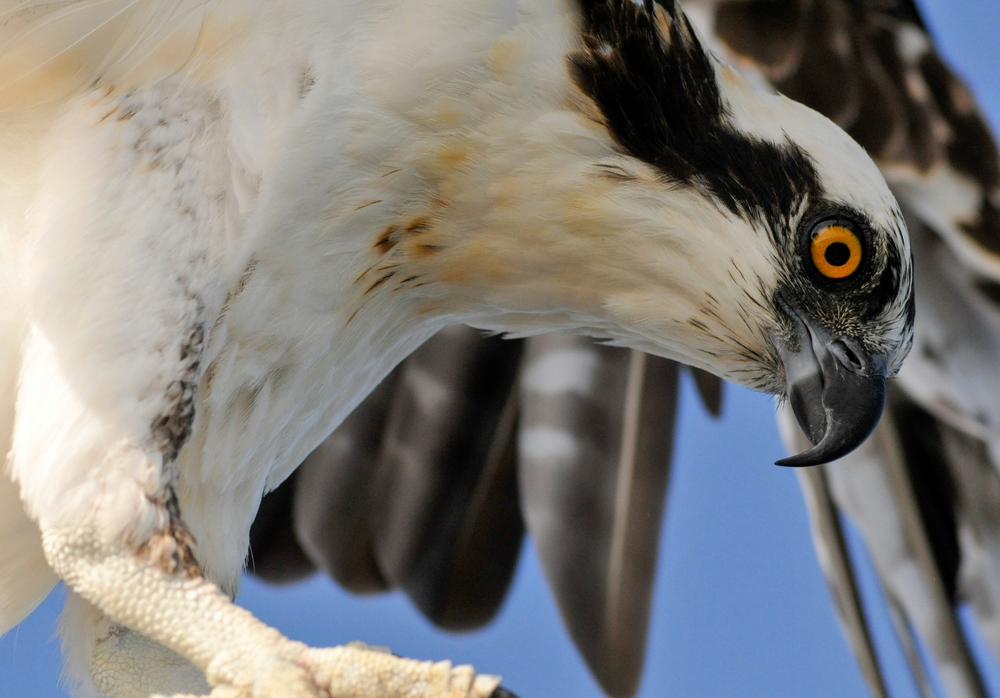
Ospreys are skilled hunters, and their commitment to their partners is equally impressive. These raptors form monogamous bonds and return to the same nesting sites year after year, maintaining and improving their nests together. Their shared investment in their home demonstrates a strong partnership and dedication to their future. This commitment extends to their roles as parents, with both partners actively involved in raising their young.
During the breeding season, the male osprey takes on the primary role of providing food, while the female focuses on incubating the eggs and caring for the chicks. This division of labor ensures that their young are well-fed and protected. Ospreys’ ability to work together as a team highlights the importance of cooperation and trust in a relationship. Their partnership is a powerful example of how commitment and collaboration can lead to a successful and fulfilling family life.
